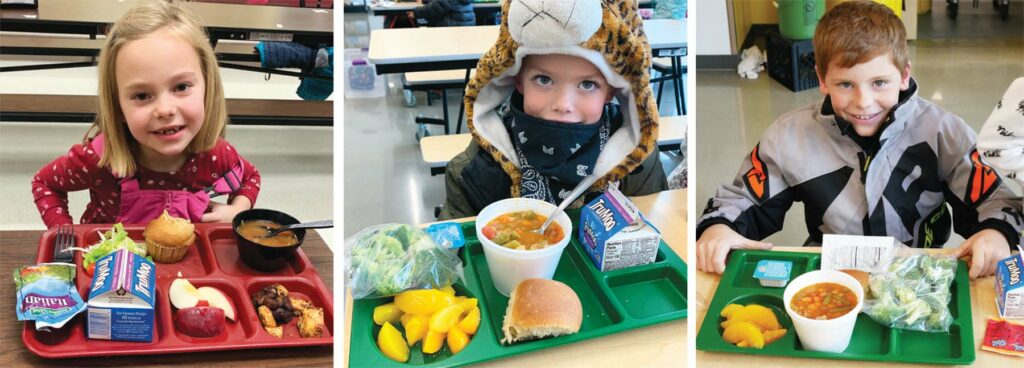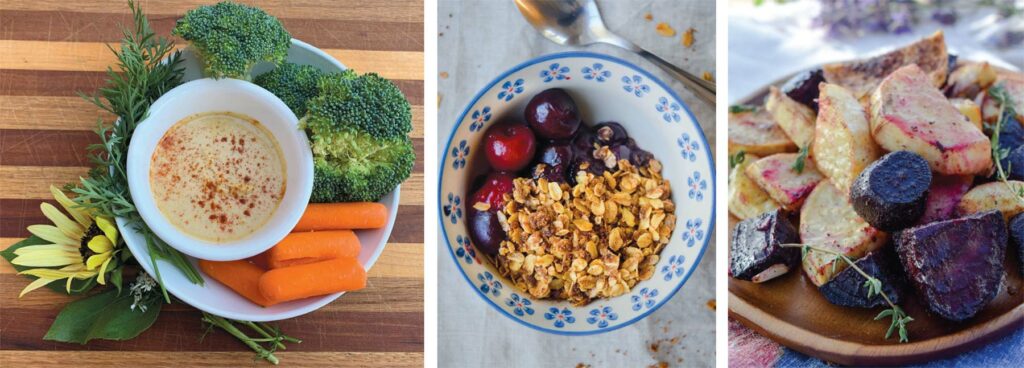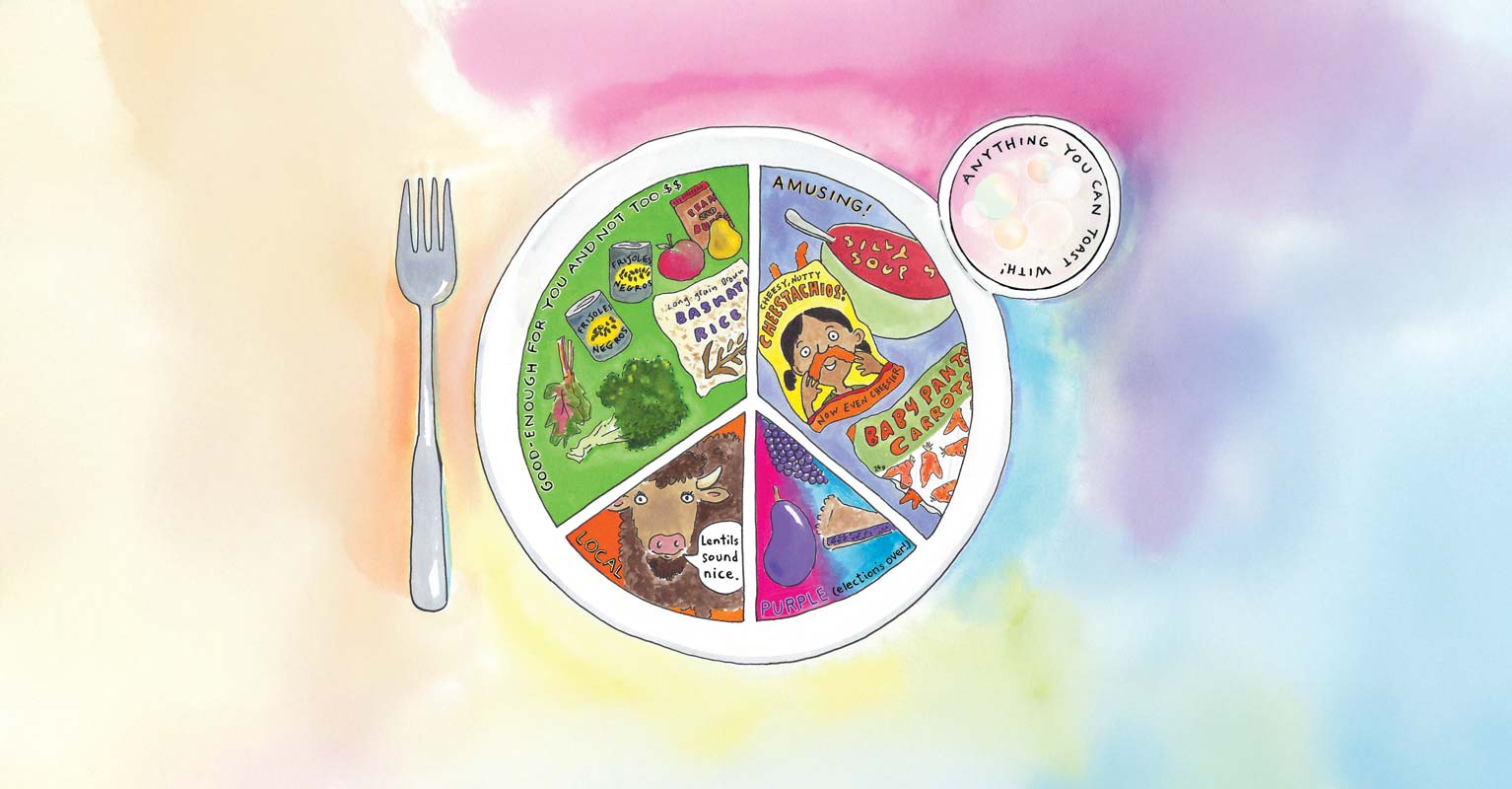Photo by Molly Stenberg
MSU’s Program Gets Local Foods into Local Schools
When I was a kid attending Longfellow Elementary in the 1980s, “hot lunch” referred to what the cafeteria served, and “cold lunch” meant you brought your lunch from home. Cafeteria standards being what they were at that time and place, the cool kids brought cold lunch. I was not a cool kid. Therefore, the scent of the industrial steam table and the taste of mushy pizza will be with me forever, I fear.
Fortunately, times have changed drastically. The food culture in this country is increasingly recognizing the importance of local and organic foods, the childhood obesity epidemic, seasonal harvesting, whole foods, farming, and more. Our society is getting much better at prioritizing healthful food options, especially for youth. Balance is arguably the most important eating habit to develop, and like everything else in life, the earlier one starts practicing, the easier it becomes.
This is where MSU’s Harvesting Montana Recipes project comes in. In early 2021, the Office of Public Instruction (OPI) in Helena received a $183,000 grant from the U.S. Department of Agriculture (USDA) for the purpose of developing recipes that feature local foods and creating education segments about the foods for use in Montana’s K–12 schools. OPI has worked with MSU’s Montana Team Nutrition (MTN), part of MSU’s College of Education, Health and Human Development, for the past two years and developed school-lunch-appropriate recipes using Montana-grown beets, cherries, grains, squash, lentils, and bison.

Molly Stenberg, co-director of MTN, explains how she and her team invited all Montana school districts to submit recipes using these local foods. MTN then narrowed down the submissions to a select six. With festive names like “Purple Pirate Potatoes” (named for Power School District’s pirate mascot) and “Cherry Berry Sunrise,” each of the six meals was offered on the 2021–22 public school lunch menu during a pilot season at six schools.
Before use in schools, these recipes were tested by Leah Smutko, chef at Bozeman’s Fork and Spoon, during the restaurant’s 2021 summer feeding program. Thanks to Smutko, these recipes were USDA-standardized and cleared for production in smaller commercial kitchens.
The next step was to test the recipe flavors with kids. All Montana school districts were invited to apply for participation and the project was especially promoted toward districts that are involved with the Montana Harvest of the Month (HOM) program, which was started by Aubree Roth of MTN and helps schools feature a different Montana food each month in K–12 school meals. Schools participating in HOM already focus on from-scratch cooking and local foods, and were good candidates for the Harvesting Montana Recipes project.
Six school districts were chosen: Belfry Public Schools, Belgrade School District, Gardiner Public Schools, Monforton School, Philipsburg School, and Somers Lakeside School District. The districts were given purchasing lists detailing where to find the local foods, and each school prepared the recipes and served the meals to students, while offering an accompanying educational component about the specific foods. “Pilot schools were just amazing in how they prepared the recipes and did the nutrition education,” says Stenberg. “They made the events so fun.
Belfry did theirs on Veterans Day and made it a celebration, with an assembly and special guests. At Monforton and Belfry, the kids watched a video about sweet cherries, and then did a taste-testing. Belgrade invited Buff alo Restoration to have someone come in their buff alo costume while the kids ate and learned about the bison barley soup.”

When a picky child’s options are limited to a hot lunch of hamburgers with soggy buns and even soggier fries, or a cold lunch of PB&J and Saltines, that can result in a stunted palate. Worse things have happened; however, we now know that you truly are what you eat. And what you eat has lasting, global impacts.
The measure of success of Harvesting Montana Recipes came largely through the lessons accompanying the tasty meals the students got to eat. Students were given preand post-project tests about the local foods, and 86 percent of questions were answered correctly after the project, whereas only 60 percent were answered correctly before it.
“Through nutrition education, we increased knowledge of local foods,” Stenberg says. “We have the capacity to do broad outreach throughout the state, and these recipes have been shared with every school district in Montana that participates in the national school lunch program, which most in this state do.”
In addition to support from OPI, MTN collaborated with many other organizations to make this project a reality. MSU Extension helped to plug the recipe contest; the Montana School Nutrition Association, Sprout Oral Health, and the Northern Pulse Growers Association contributed $500 cash prizes for the schools that won the recipe contest; and Timeless Seeds in Ulm, Montana, donated lentils to Fork and Spoon for testing.
For some of us, these types of eff orts might have inspired locavorism, creativity with food, or simply a willingness to try new things, at a much younger age. When a picky child’s options are limited to a hot lunch of hamburgers with soggy buns and even soggier fries, or a cold lunch of PB&J and Saltines, that can result in a stunted palate. Worse things have happened; however, we now know that you truly are what you eat. And what you eat has lasting, global impacts. Will there be more eff orts like this in the future for Montana schools? Stenberg says yes. “We apply for these USDA grants every time they come out, every two to three years.” The next one looks at developing the Montana school meals certificate program. “It will be really sound training for food service directors and staff to help them be more confi dent and efficient in running their programs,” she says.
Certainly, this program and many others like it are important opportunities for the state of Montana to help children develop healthy food habits. What a delicious development that Montana is getting healthful, local grains and veggies into children’s diets.
- The recipes highlighted in the Harvesting Montana Recipes project are available online at montana.edu/teamnutrition and will be shared via the Montana School Nutrition Association, OPI, HOM, and the Institute of Child Nutrition.




